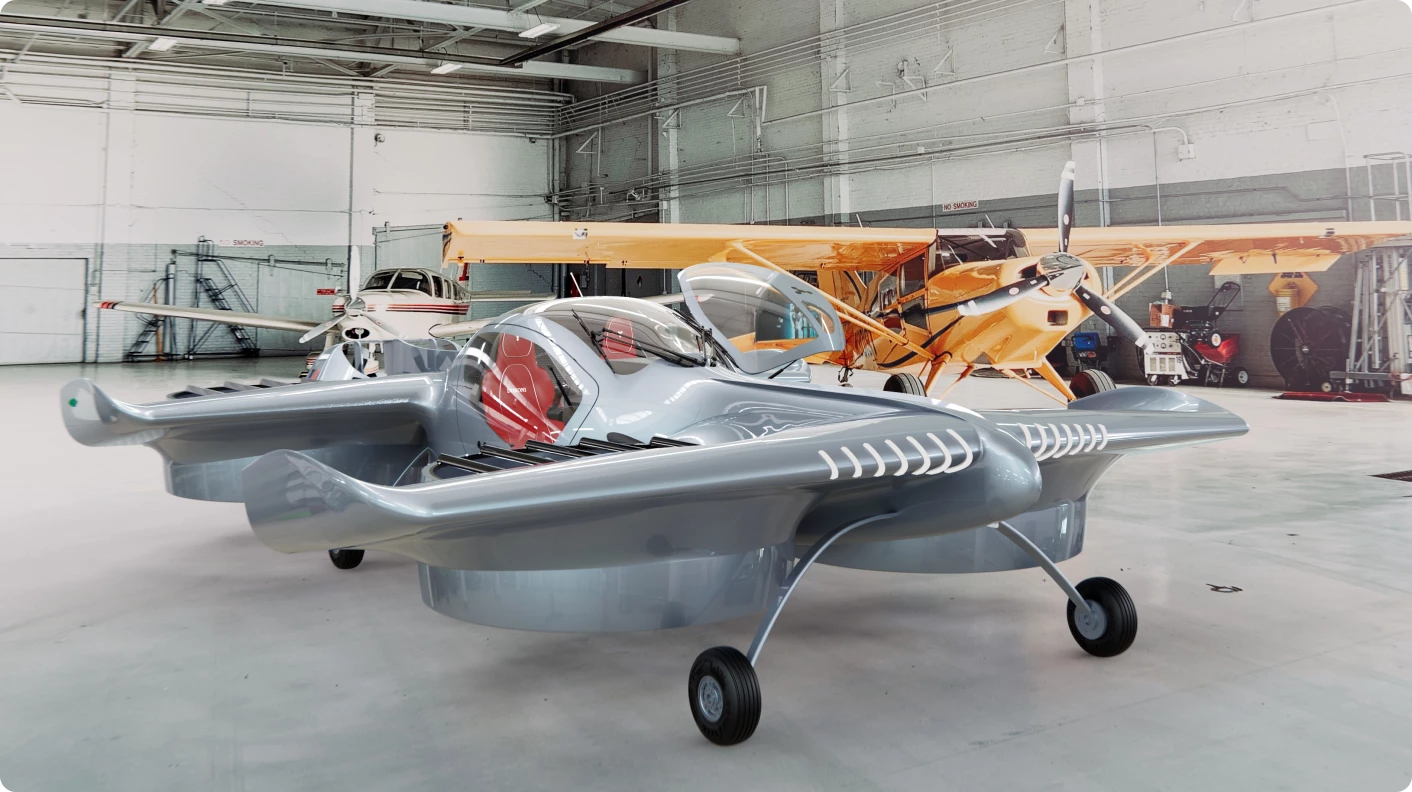Doroni says it's just months away from a full-scale, flying prototype of its H1 two-seat personal eVTOL design. Where most in this space build the simplest and cheapest multicopter-style airframes possible, the H1 offers dedicated horizontal thrust, too.
The H1 is certainly a peculiar looking bird: a two-seat bubble of a cockpit, sandwiched between large front and rear wings. These wings are dominated by enormous ducts sunk into them, each housing a pair of large, contra-rotating vertical lift props, for a total of eight. At the back of the aircraft, there's a further two props for horizontal thrust.
This looks like an extremely mild version of the lift 'n' cruise style airframe; indeed, as with straight winged-multicopter style eVTOLs like the Air One and SkyFly Axe, the H1's wings are pitched backward, so the aircraft is clearly expected to pitch forward to move forward, like a multicopter, rather than relying entirely on its twin pusher props at the back for forward propulsion.
To the layman's eye, the aerodynamics look pretty awkward here. The wings are large, but then so are the fan ducts, which will cause merry havoc with the air flow both over and under each wing, while also adding drag. We also wonder about the airflow to the pusher props – and indeed why Doroni decided to apparently block nearly half of their swept area with a swoopy rear cover.

On the other hand, while there might be an efficiency price to pay for ducted propulsion, it certainly looks a little less scary and amputative than an open-prop slicer dicer. And while open props haven't been much of a safety issue for conventional planes, eVTOLs are expected to eventually operate a fair bit closer to the urban environment. So maybe the idea of ducts just for pedestrian reassurance might have merit.
In performance terms, Doroni says the H1 will fly at a top speed of 140 mph (225 km/h) – which suggests that the company doesn't think drag is going to slow it down too much as compared to the Air One, which is a bit faster. Cruise speed will be more like 100 mph (160 km/h), and the range will be around 60 miles (96 km). Doroni is targeting a weight around 930 lb (650 kg), with a payload capacity of 500 lb (200 kg).
Safety-wise, the landing gear is a bit springy and the body is apparently designed to dissipate energy. Emergency airbags will be built in to cushion a really rough landing, propulsion redundancy is assured through the coaxial double lift props at each corner, and the battery packs will offer multiple levels of redundancy, too. There's also a ballistic parachute planned, capable of bringing the whole aircraft down reasonably gently in case of a total failure at sufficient altitude.

Doroni says the H1 is an eVTOL anyone can own, fly and park in their garage. On the last point, it measures 23 x 15 x 5.5 ft (7 x 4.6 x 1.7 m), making it a little longer and nearly twice as wide as a Ford F350, so you'll want a decent sized shed. On the second point, the company is targeting a Light Sport Aircraft certification with the FAA, which would allow owners to fly the thing with just 20-odd hours of training.
Having already flown a couple of smaller-scale tech demonstrators, the company says it's looking to get a full-scale "flying showroom model" in the air sometime in Q4 this year, then ramp up toward production through 2023, FAA certification in early 2024, and the first customer deliveries by Q4 2024.
We're a little unconvinced with this one. It appears to add aerodynamic complexity to a standard winged multicopter design, resulting in slower speeds and reduced range. Its potential for success would appear to rest chiefly on whether people want their eVTOL propellers exposed or not. But Doroni seems reasonably advanced down its path, and we'll keep an open mind and see how things develop as the H1 gets closer to production. Meet the team in the investor presentation video below.
Source: Doroni via Robb Report










